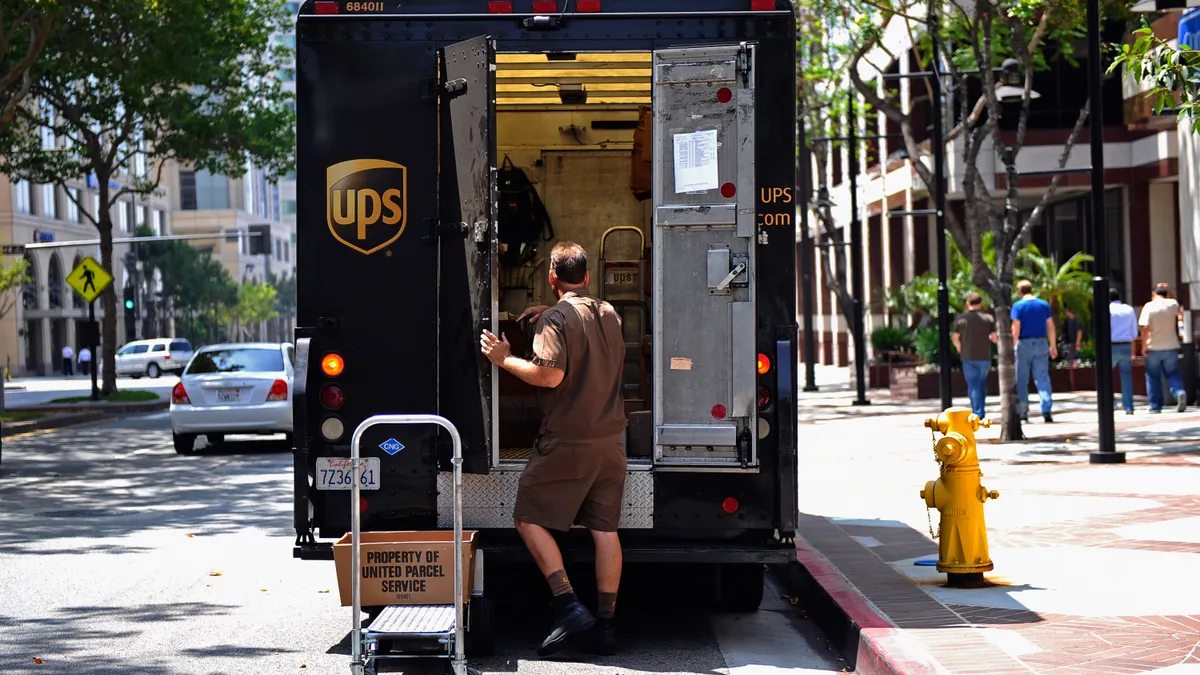The fast-approaching end of the de minimis exemption could pose challenges for e-commerce supply chains' peak season plans.
The exemption, which allows sub-$800 imports to enter the U.S. duty and tax free, will be eliminated on Aug. 29 to crack down on drug trafficking and importers avoiding tariffs, per a White House fact sheet. De minimis was previously set to end on July 1, 2027 as part of a tax bill signed by President Donald Trump last month.
The exemption has been barred for China-origin imports since May, but many importers planned to keep using the trade tool from other countries for the next few years, LVK Logistics CEO Maggie Barnett said. While de minimis is associated with major direct-to-consumer marketplaces like Shein and Temu, an array of other businesses also utilize the tool for cost-effective parcel shipping across borders.
"They're scrambling right now because they just thought [the elimination] wouldn't happen so fast," Barnett said.
The shortened timeline for the trade tool's elimination will make it difficult for direct-to-consumer importers to fully adjust their operations ahead of the Q4 holiday shopping rush. However, there are ways for de minimis-reliant shippers to mitigate impacts tied to the exemption's end in both the short and long term, according to experts.
Pricing and shipping hurdles ahead
Without de minimis, low-cost imports will be subject to all applicable duties — including tariffs installed by President Donald Trump's administration — presenting added costs they could previously avoid.
Trump's executive order eliminating the trade tool provides an exception to this change for one cost-effective import method: the international postal network. Postal packages won't get off scot-free, however. They will be assessed either a duty equal to International Emergency Economic Powers Act tariffs or an $80-to-$200 fee based on the IEEPA rate.
The latter approach will be available for only six months, and the fee is a tough pill for importers to swallow, according to experts. The average value of a de minimis shipment was about $54 in U.S. Customs and Border Protection's 2023 fiscal year.
Passing the cost burden of tariffs onto consumers has been a tactic mulled by many retailers this year. However, online shoppers accustomed to low prices could consider other options like brick-and-mortar stores if they're faced with added fees, said Nick Baker, co-lead of Kroll's trade and customs practice.
"When customers start seeing a tariff cost or a tariff charge in their cart, that's a lot of times going to kill that deal," Baker said.
De minimis' end will hike import costs for US-destined items
| Item | Origin country | 2024 price | 2025 price* |
|---|---|---|---|
| Woman’s Cotton Cozy Slipper | China | $30 | $45.37 |
| Nutritional supplement | Canada | $37 | $60.17 |
| Stainless Steel Water Bottle | U.K. | $15 | $21.81 |
| Japanese Chef’s Knife | Japan | $240 | $298.49 |
Source: FlavorCloud
*2025 price includes general duties, tariffs and fees that will apply to sub-$800 goods once the de minimis exemption is eliminated Aug. 29. The exemption is already barred for China-origin imports.
Beyond pricing pressures, shipping delays could emerge as Customs and Border Protection processes a wave of formerly de minimis shipments through more stringent entry procedures, said Anthony Pizza, VP of marketing at freight forwarder Accelerated Global Solutions. Smaller shippers in particular may have trouble complying with formal entries, which call for detailed commercial invoices, a customs bond and more.
“The major retailers and all of our clients will be ready for peak,” Pizza said, but he added that “headaches and hiccups” will emerge for unprepared businesses.
Bulk shipping means bigger inventory bets
To understand the impact tariffs will bring on de minimis shipments, shippers should identify which of their SKUs leverage the de minimis exemption and run cost simulations that include applicable tariffs and fees, according to Stord. The fulfillment provider said businesses should also simulate the cost of importing a large number of units at once — as opposed to individual shipments direct to consumers — to determine the most cost-effective fulfillment strategy to employ.
Bulk imports to domestic warehouses will likely be more efficient than individual shipments for many e-commerce brands, according to experts. Such a shift could boost containerized imports while stymieing air cargo activity.
"Now you need a wholesale strategy where you're bringing in these goods and holding it in [the] U.S.," said Rathna Sharad, CEO and founder of FlavorCloud, a cross-border shipping platform.
But bulk importing will present new inventory planning considerations for formerly de minimis-centric brands, as they will have to ensure the goods they're bringing in larger quantities have enough appeal to sell quickly and not clog up warehouses. Companies may incentivize consumers to buy goods already stocked in the U.S. through sales promotions, Baker noted.
Some importers with inventory tied up in cross-border warehouses in Canada and Mexico are limiting the frequency of their U.S.-bound shipments, Barnett of LVK Logistics said. This allows them to consolidate a larger number of orders into a single customs crossing, limiting costs associated with customs clearance. The tradeoff is that it potentially introduces slower fulfillment speeds to consumers, so many shippers are considering U.S.-based fulfillment options once the peak season rush clears up, she said.
"Everyone is just doing this to get through peak season, get through the end of the year while they start to figure out their new business model," Barnett said. "And that usually will entail a U.S. 3PL because again, they're going to have to pay the tariffs at some point."





















